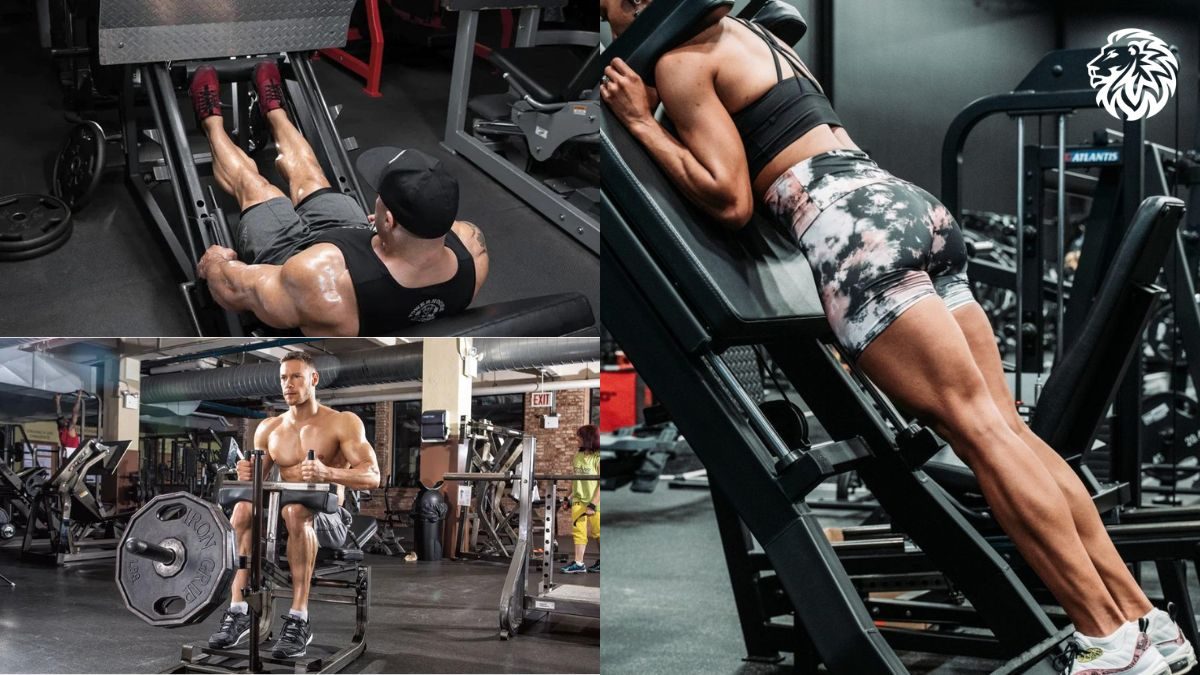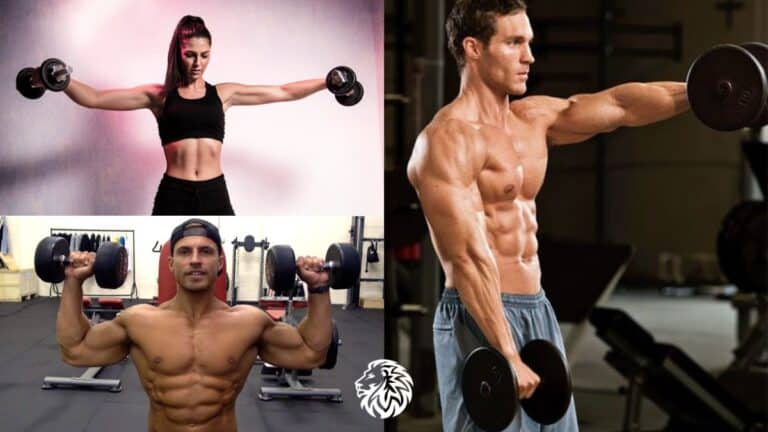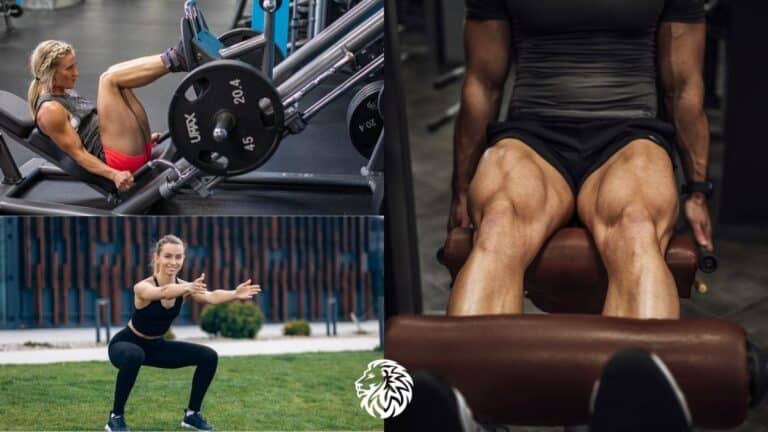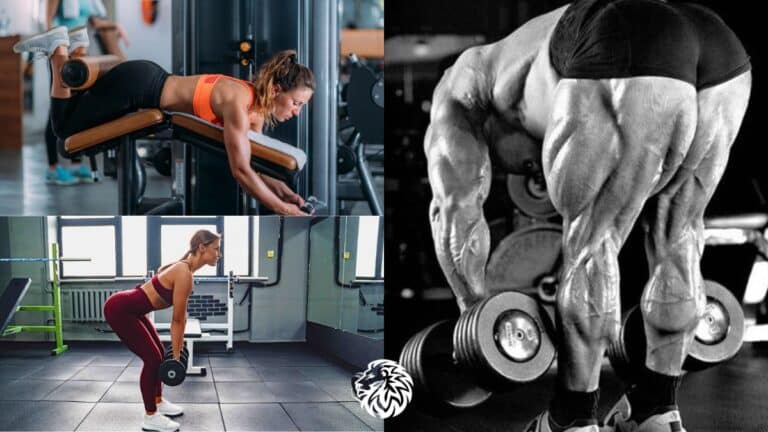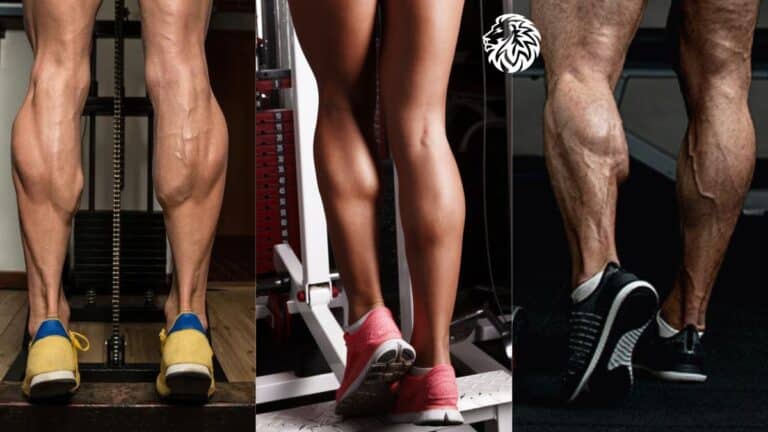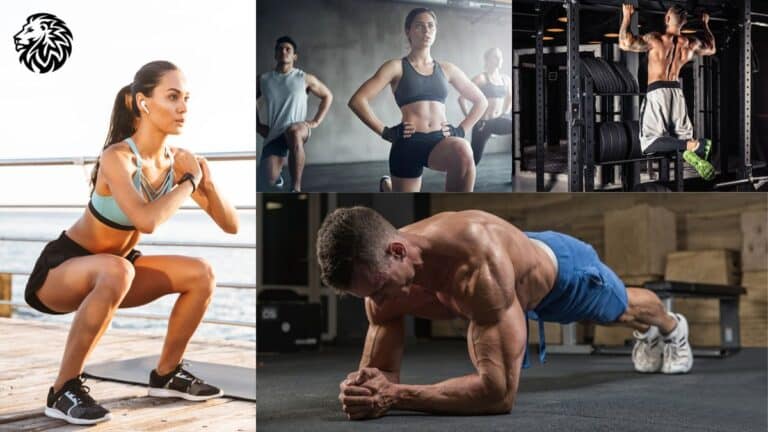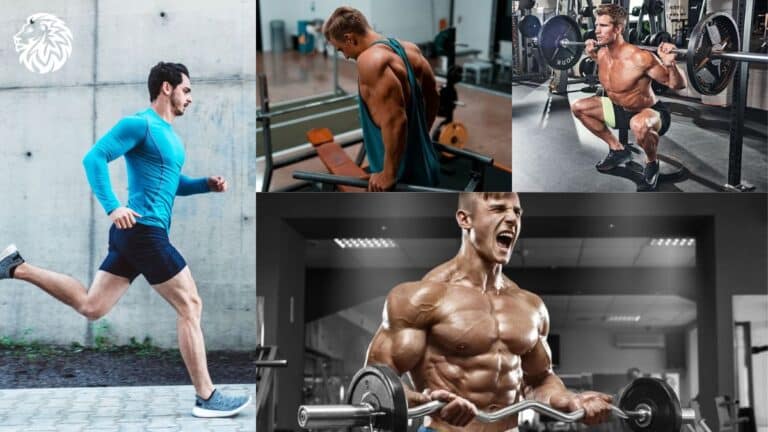The calf muscles, nestled at the back of the lower leg, are pivotal in defining the overall aesthetics and functionality of your legs. These muscles, primarily the gastrocnemius and soleus, play a crucial role not only in daily activities like walking and running but also in sports performance and balance. However, developing strong and well-defined calves can be a notoriously challenging endeavor, particularly for those with naturally slender legs. This difficulty often stems from a combination of genetics, muscle composition, and the unique demands of calf muscle training.
For many, skinny legs are a source of frustration, especially when trying to achieve a balanced, muscular physique. The calves can stubbornly resist growth, making them one of the toughest muscle groups to enhance. This resistance to development can be demotivating, leading many to neglect these muscles in their fitness routines. However, with the right approach, even the most stubborn calf muscles can be encouraged to grow.
Recognizing the challenges and importance of building strong calves, this article aims to be a comprehensive guide for anyone looking to enhance the size and strength of their calf muscles. We will delve into a variety of exercises, each tailored to effectively target the calf muscles, ensuring that your efforts yield visible and satisfying results. Whether you’re an athlete seeking improved performance or someone simply looking to add definition to your legs, the exercises outlined here are designed to help you overcome the challenges of calf development and achieve the muscular legs you desire.
Understanding the Calf Muscles
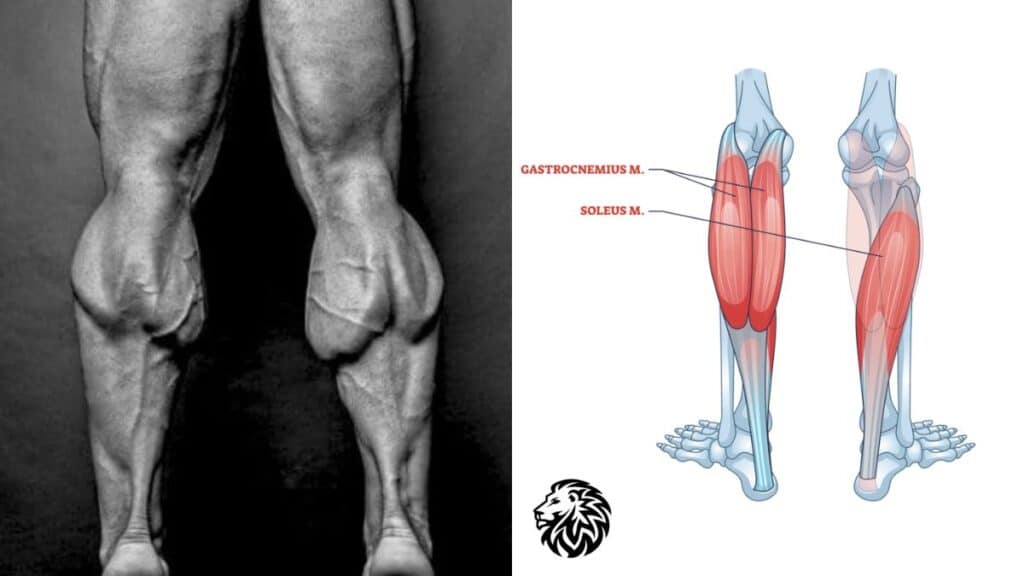
To effectively bulk up the calf muscles, it’s essential to first understand their anatomy and function. The calf is primarily composed of two muscles: the gastrocnemius and the soleus.
- Anatomy of the Calf Muscles
- Gastrocnemius: This is the larger, more visible muscle, forming the bulge beneath the skin. The gastrocnemius has two heads (medial and lateral) that originate just above the knee and attach to the heel via the Achilles tendon. It’s primarily engaged during activities that involve bending the knee and lifting the heel off the ground.
- Soleus: Located beneath the gastrocnemius, the soleus is a flatter and longer muscle. It attaches below the knee and also connects to the heel through the Achilles tendon. Unlike the gastrocnemius, the soleus is more active when the knee is straight, playing a significant role in standing and walking.
- Contribution to Leg Function and Aesthetics
- These muscles work together to perform plantar flexion, where the foot points down and away from the leg. This movement is critical for pushing the body forward in walking, running, and jumping.
- Aesthetically, well-developed calf muscles contribute to the overall symmetry and balance of the lower body. They add a desirable contour and shape to the legs, enhancing their appearance, especially when viewed from the side.
- Common Reasons for Underdeveloped Calves
- Genetic Factors: Genetics play a significant role in the natural size and shape of your calf muscles. Some people are predisposed to have less muscle mass in this area.
- Neglect in Training: Often, calves are overlooked in favor of larger muscle groups in the legs. This lack of focused training can lead to underdevelopment.
- Training Technique: Incorrect or inadequate training techniques can also contribute to poor calf development. This includes not using a full range of motion or not varying exercises to target both the gastrocnemius and soleus.
- Limited Variation in Exercise: Relying on a limited set of exercises can lead to plateauing in muscle growth. Variation is key to continually challenge and develop the calf muscles.
Understanding these aspects of calf muscle anatomy and function is crucial for devising an effective training strategy. It helps in targeting these muscles accurately, leading to more efficient workouts and better growth results.
The Importance of Nutrition and Recovery
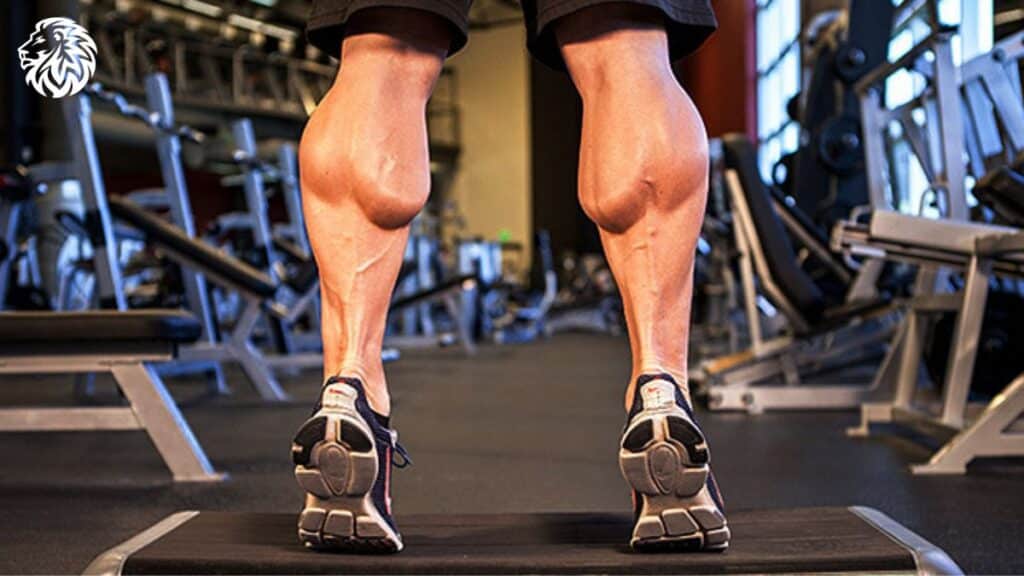
While exercise is fundamental in developing the calf muscles, nutrition and recovery are equally crucial components of an effective muscle-building strategy. Understanding how these elements impact muscle growth can significantly enhance your training results.
- Impact of Nutrition on Muscle Growth
- Fueling Muscle Repair and Growth: Muscle growth occurs when the rate of muscle protein synthesis exceeds the rate of muscle protein breakdown. Proper nutrition provides the building blocks (amino acids) necessary for this process.
- Macro and Micronutrients: A balanced intake of macronutrients (proteins, carbohydrates, and fats) and micronutrients (vitamins and minerals) is essential for overall health and aids in muscle recovery and growth. Carbohydrates are particularly important for replenishing glycogen stores used during intense workouts.
- Importance of Protein and Calorie Intake
- Protein: Protein is vital for muscle repair and growth. A guideline for those looking to build muscle is to consume approximately 1.6 to 2.2 grams of protein per kilogram of body weight per day. Sources of high-quality protein include lean meats, dairy, eggs, and plant-based options like legumes and soy.
- Calories: Consuming enough calories is also crucial. To gain muscle, you need to be in a caloric surplus, meaning you consume more calories than you burn. This surplus provides the energy required for muscle building.
- Role of Rest and Recovery in Muscle Growth
- Recovery Time: Muscles need time to repair and grow after a workout. This is why it’s important to allow adequate rest, typically 24-48 hours, before targeting the same muscle group again.
- Sleep: Quality sleep is another critical aspect of recovery. During sleep, growth hormone levels peak, facilitating muscle repair and growth.
- Active Recovery: Incorporating active recovery days with light exercises such as walking or yoga can help in maintaining overall mobility and reducing muscle soreness.
Proper nutrition and recovery are the foundation upon which effective muscle building is built. They complement your exercise regimen, ensuring that your efforts in the gym are maximized and lead to significant calf muscle growth.
Warm-Up and Preparation
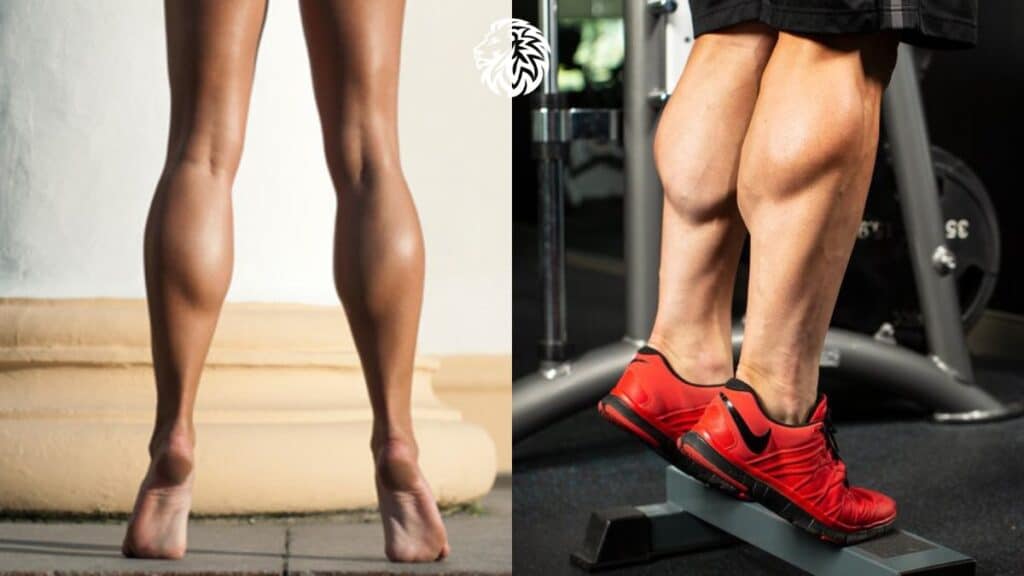
Before diving into calf exercises, it’s crucial to prepare the muscles through proper warm-up. Warming up not only primes the muscles for the workout ahead but also reduces the risk of injury and improves overall performance.
- Necessity of Warming Up Before Calf Exercises
- Enhancing Muscle Elasticity: Warming up increases blood flow to the muscles, making them more elastic and less prone to tears or strains.
- Improving Range of Motion: A good warm-up gradually increases the range of motion in the joints involved, which is essential for exercises that require ankle flexibility like calf raises.
- Mental Preparation: It also prepares you mentally for the workout, helping you focus and perform exercises with better form.
- Simple Warm-Up Exercises and Stretches for the Calves
- Ankle Circles: Sit or stand and lift one foot off the ground. Rotate your ankle clockwise for 10-15 seconds, then counterclockwise. Repeat with the other ankle. This exercise improves ankle mobility.
- Walking on Toes: Walk on your toes for 30 seconds. This activates the calf muscles and helps improve balance.
- Walking on Heels: Similar to walking on toes, walk on your heels to activate the muscles in a different way.
- Calf Raises: Stand on the edge of a step or on flat ground. Slowly raise your heels as high as possible, then lower them below the step level or to the ground. Perform 10-15 repetitions. This exercise warms up the calves directly.
- Dynamic Stretching: Perform dynamic stretches like leg swings. Swing one leg forward and backward, gradually increasing the range of motion. This helps loosen the leg muscles, including the calves.
- Foam Rolling: Using a foam roller on the calf muscles can help release muscle tightness and improve blood flow.
Incorporating these warm-up exercises into your routine ensures that your calf muscles are well-prepped and ready for a more intense workout. This not only enhances the effectiveness of the exercises but also helps in long-term injury prevention.
Best Calf Exercises for Bulking Up
A well-structured calf workout is essential for adding size and strength to skinny legs. Among the most effective exercises for this purpose are standing calf raises. This exercise targets the gastrocnemius muscle primarily but also engages the soleus to a lesser extent.
Standing Calf Raises
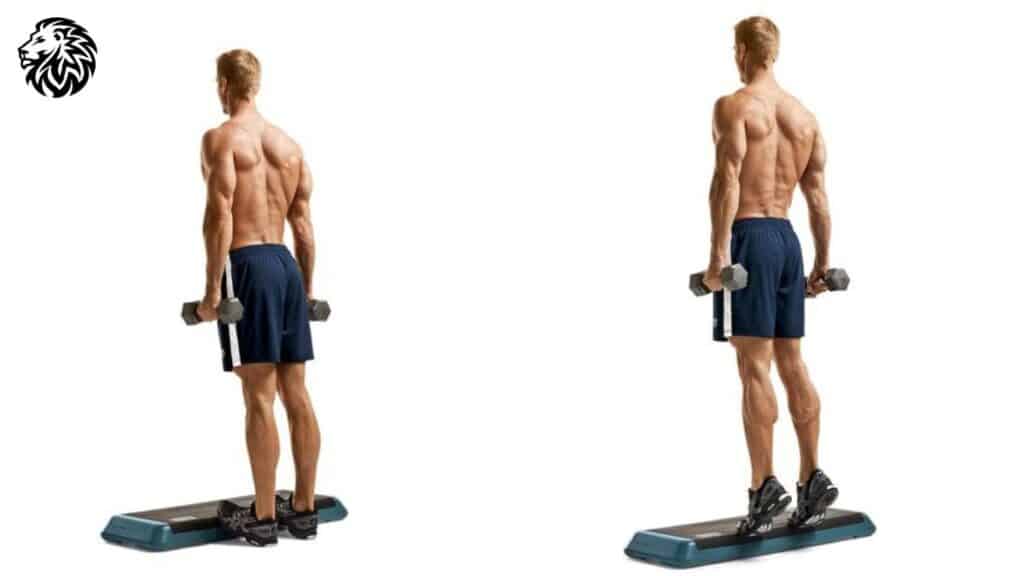
- Description:
- Standing calf raises are a classic exercise focused on elevating the heels to engage the calf muscles. This exercise can be performed with or without weights, making it versatile for various fitness levels.
- Step-by-Step Guide:
- Positioning: Stand upright with your feet hip-width apart. If using a calf raise machine or holding weights, ensure they are positioned comfortably.
- Movement: Slowly raise your heels as high as possible, pushing through the balls of your feet. Keep your core engaged and your back straight.
- Peak Contraction: Pause briefly at the top of the movement for maximum calf contraction.
- Lowering Phase: Slowly lower your heels back to the starting position. It’s important to control this movement rather than letting gravity do the work.
- Repetition: Perform the desired number of repetitions, typically 10-15 for muscle growth.
- Variations and Equipment Needed:
- Bodyweight Calf Raises: Can be done anywhere, even at home, without any equipment.
- Dumbbell Calf Raises: Holding a dumbbell in each hand can add resistance to the exercise.
- Barbell Calf Raises: A barbell placed on the shoulders can provide a more significant challenge.
- Calf Raise Machine: Many gyms have dedicated machines that provide a stable and effective way to perform this exercise.
- Smith Machine Calf Raises: The Smith machine offers a way to perform calf raises with a barbell in a controlled path.
- Elevated Surface: Performing this exercise on a step or a raised platform allows for a greater range of motion, deepening the stretch and contraction of the calf muscles.
Seated Calf Raises
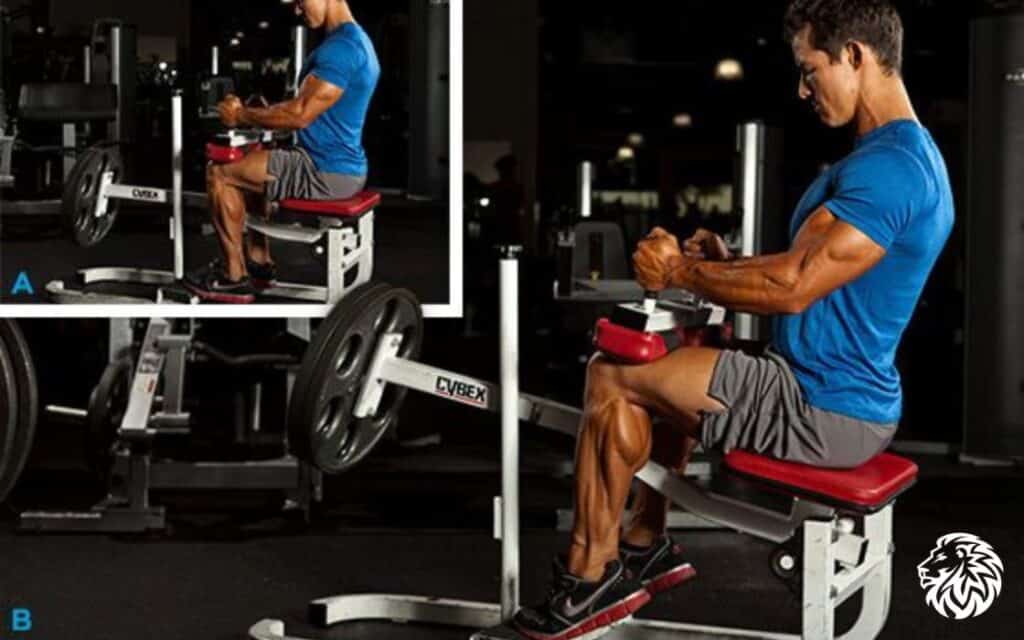
Seated calf raises are excellent for specifically targeting the soleus muscle, which lies underneath the more visible gastrocnemius. This exercise is particularly beneficial because the soleus muscle contributes significantly to the overall size and definition of the calves.
- Description:
- Seated calf raises involve lifting the heels by flexing the ankle while in a seated position. This position puts more emphasis on the soleus muscle since the knees are bent, reducing the involvement of the gastrocnemius.
- Step-by-Step Guide:
- Positioning: Sit on a calf raise machine or a sturdy chair with your feet flat on the ground. If using a machine, place the balls of your feet on the edge of the platform with your knees under the pads.
- Weight Placement: If using a machine, select an appropriate weight. If performing without a machine, you can place a weight plate or dumbbell on your knees for added resistance.
- Movement: Press up through the balls of your feet to raise your heels as high as possible, focusing on contracting the calf muscles.
- Peak Contraction: Hold the top position briefly for maximum muscle engagement.
- Lowering Phase: Slowly lower your heels back below the level of the platform or floor, feeling a stretch in the calf muscles.
- Repetition: Complete the desired number of repetitions, typically 10-15 for muscle growth.
Leg Press Calf Raises
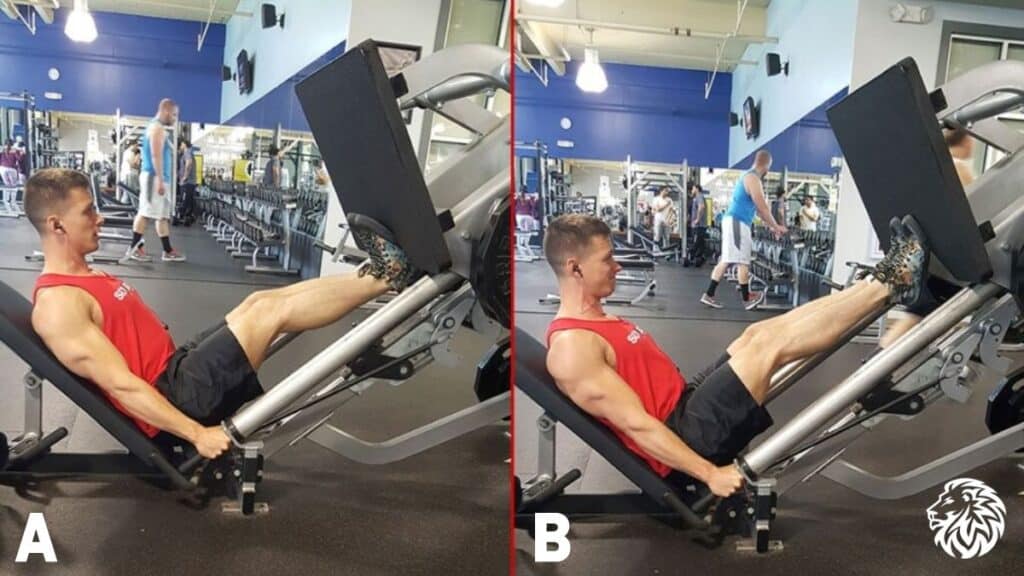
Leg press calf raises are an effective way to target the calf muscles while also engaging the larger muscle groups of the legs. This exercise can be particularly beneficial for overall leg strength and development.
- Description:
- This exercise is performed on a leg press machine. It focuses on the calf muscles but also requires stabilization from the thighs and glutes, making it a compound exercise.
- Step-by-Step Guide:
- Positioning: Sit on the leg press machine with your back flat against the seat. Place the balls of your feet on the bottom part of the platform with your heels hanging off.
- Starting Position: Press the platform up until your legs are almost fully extended but not locked.
- Movement: Lower your heels towards the ground as far as possible, then press through the balls of your feet to raise your heels, fully contracting the calves.
- Controlled Motion: Ensure the movement is controlled and focused, avoiding locking the knees at any point.
- Repetition: Perform a set of 10-15 repetitions, maintaining focus on the calf muscles throughout the movement.
Benefits of Leg Press Calf Raises for Overall Leg Strength:
- Compound Exercise: In addition to isolating the calves, this exercise engages the quadriceps, hamstrings, and glutes, contributing to overall leg strength.
- Increased Stability: The leg press machine provides stability, allowing for more focused and intense calf muscle engagement.
- Adjustable Resistance: The ability to easily adjust weights on the machine makes it suitable for progressive overload, a key factor in muscle growth.
Single-Leg Calf Raises
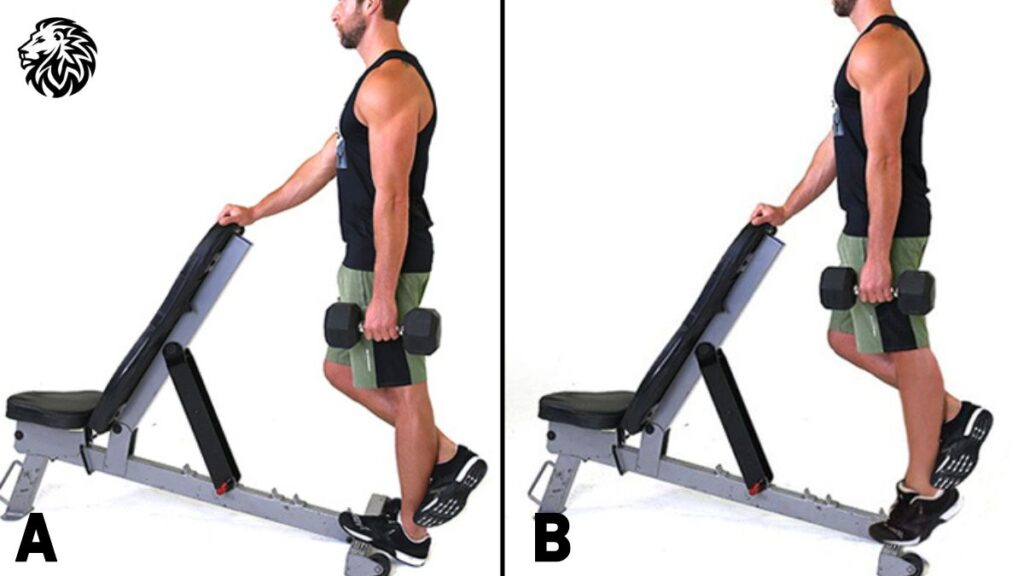
Single-leg calf raises are an excellent exercise for targeting each calf individually, helping to correct muscle imbalances and improve unilateral strength and balance.
- Description:
- This exercise focuses on isolating the calf muscle of one leg at a time. It’s particularly effective for ensuring both calves develop evenly and for enhancing overall balance and coordination.
- Step-by-Step Guide:
- Positioning: Stand on one leg, holding onto a stable surface like a wall or a chair for balance. Position the ball of your standing foot on an elevated surface, like a step, if available.
- Movement: Slowly raise your heel as high as possible, pushing through the ball of your foot. Keep your core engaged and maintain balance.
- Peak Contraction: Pause briefly at the top of the movement for a maximum calf contraction.
- Lowering Phase: Slowly lower your heel back down, going past the level of the step or floor for a full stretch.
- Repetition: Complete the desired number of repetitions, then switch to the other leg.
Importance of Single-Leg Calf Raises for Balance and Unilateral Strength:
- Correcting Imbalances: This exercise helps in identifying and correcting strength imbalances between the two calves.
- Balance Improvement: It enhances proprioception and balance, which are important for athletic performance and everyday activities.
- Focus on Individual Muscle Development: Isolating each calf ensures that both muscles are equally worked, promoting symmetrical calf development.
Jump Rope
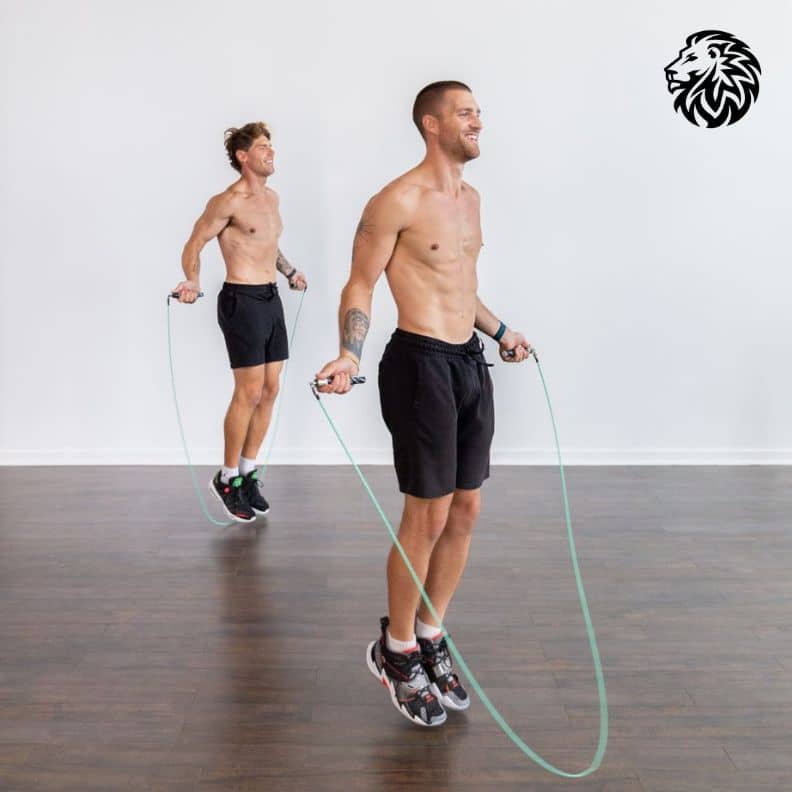
Jump rope is a dynamic exercise that improves cardiovascular fitness while also significantly benefiting calf endurance and explosiveness.
- Description:
- Jumping rope is a high-intensity, full-body workout that particularly targets the calf muscles. It requires and develops excellent coordination, timing, and calf muscle endurance.
- Step-by-Step Guide:
- Starting Position: Hold the handles of the rope with your hands and stand with your feet slightly apart.
- Movement: Swing the rope over your head and jump over it with both feet. Keep your jumps low to the ground and use your wrists to swing the rope, not your arms.
- Rhythm: Maintain a steady rhythm, focusing on landing softly on the balls of your feet.
- Duration: Start with short durations, like 30 seconds to 1 minute, and gradually increase as your endurance improves.
Benefits of Jump Rope for Calf Endurance and Explosiveness:
- Calf Endurance: Continuous jumping increases the stamina of the calf muscles, essential for sports and activities that require prolonged standing or walking.
- Explosiveness: The quick, repetitive jumping movements help in developing fast-twitch muscle fibers in the calves, contributing to explosive power.
- Coordination and Agility: Jump rope also enhances overall coordination and agility, which are beneficial in various athletic disciplines.
Advanced Techniques for Calf Growth
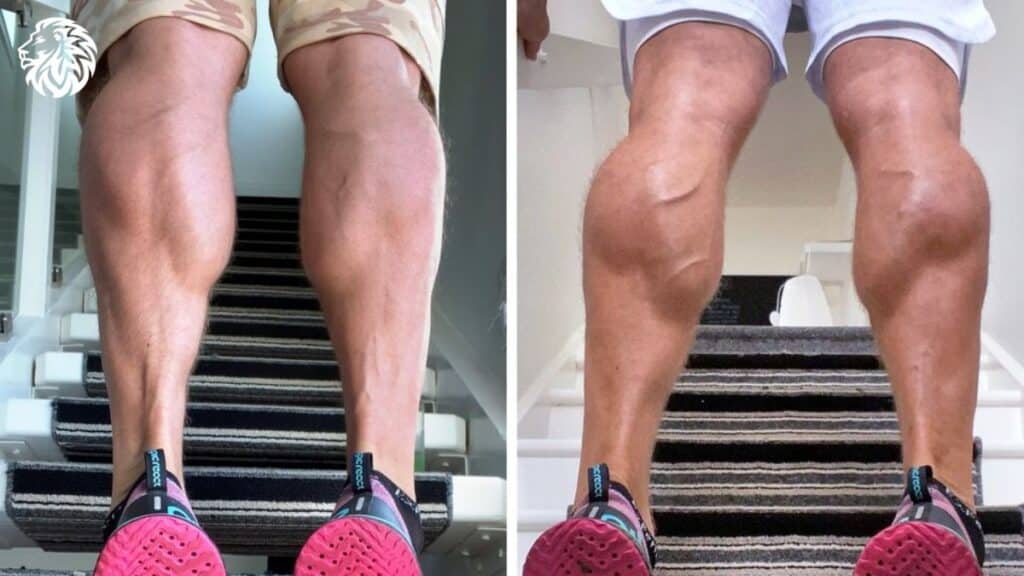
For those seeking to further enhance their calf development, incorporating advanced training techniques can provide a significant boost. Techniques like drop sets, super sets, and eccentric training not only intensify workouts but also help overcome plateaus. It’s crucial to implement these methods safely to maximize benefits and minimize the risk of injury.
- Drop Sets:
- Description: Drop sets involve performing an exercise to failure, then reducing the weight and continuing to do more reps with less weight without resting.
- Implementation in Calf Workouts:
- Start with a heavy weight for calf raises that allows you to perform 6-8 reps to failure.
- Immediately reduce the weight by about 20-30% and perform more reps until failure.
- Repeat the reduction in weight and continue until you’ve done 2-3 drops.
- Benefits: This method exhausts the muscle thoroughly, leading to deeper muscle fiber engagement and growth.
- Super Sets:
- Description: Super sets involve performing two exercises back-to-back with no rest in between. This can be done for the same muscle group or opposing muscle groups.
- Implementation in Calf Workouts:
- Pair two different calf exercises, like standing calf raises and seated calf raises.
- Perform one set of standing calf raises immediately followed by a set of seated calf raises without resting.
- This approach keeps the muscles under tension for longer periods, enhancing muscle endurance and growth.
- Benefits: Super sets increase workout intensity and efficiency, providing both strength and endurance benefits.
- Eccentric Training:
- Description: Eccentric training focuses on the lengthening phase of the muscle contraction. It’s known for its effectiveness in building muscle strength and size.
- Implementation in Calf Workouts:
- Perform calf raises with a normal concentric (lifting) phase but slow down the eccentric (lowering) phase to 3-5 seconds.
- Ensure to control the movement and feel the stretch in the calf muscles.
- Benefits: This technique increases time under tension and causes more muscle damage, leading to greater muscle repair and growth.
Safety Tips for Implementing Advanced Techniques:
- Warm-Up Properly: Always start with a thorough warm-up to prepare the muscles and joints.
- Use Appropriate Weights: Choose weights that allow you to maintain good form throughout the exercises.
- Listen to Your Body: Pay attention to how your body responds and avoid pushing through pain.
- Rest and Recover: Allow adequate time for muscle recovery, especially after intense workouts involving these advanced techniques.
Incorporating these advanced training techniques into your calf workouts can significantly accelerate muscle growth. However, it’s important to implement them thoughtfully and safely to maximize effectiveness and avoid injury.
Workout Routine Examples
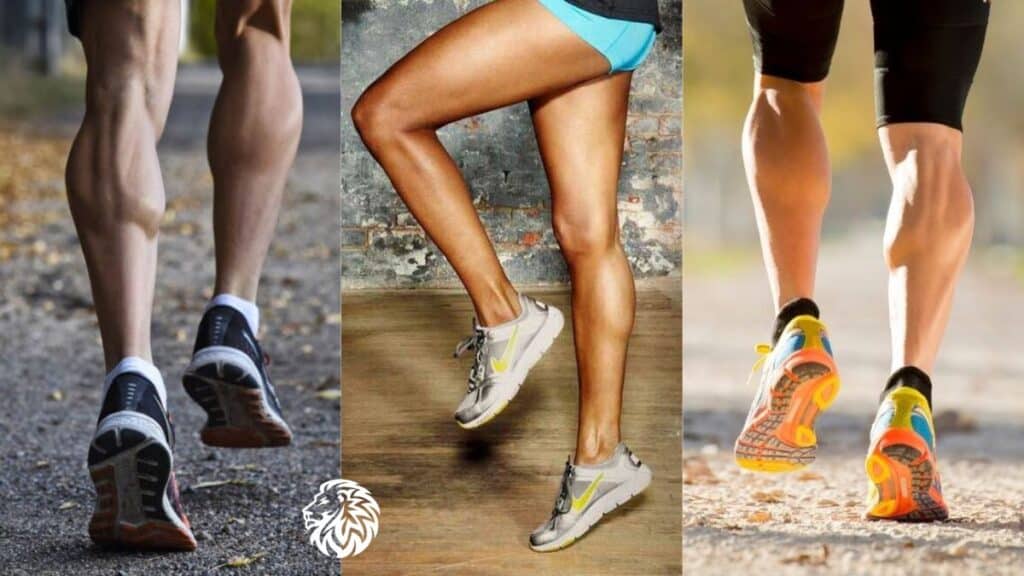
To effectively bulk up skinny legs, it’s important to have a structured workout routine that incorporates the discussed calf exercises. Below are sample routines for different fitness levels – beginner, intermediate, and advanced. These routines are designed to progressively challenge the calf muscles, promoting growth and strength.
- Beginner Workout Routine:
- Frequency: 2 times per week.
- Exercises:
- Standing Calf Raises: 3 sets of 12-15 reps.
- Seated Calf Raises: 3 sets of 12-15 reps.
- Single-Leg Calf Raises: 2 sets of 10 reps per leg.
- Notes: Focus on mastering the form and gradually increase the weight as the exercises become easier.
- Intermediate Workout Routine:
- Frequency: 3 times per week, with at least one day of rest between sessions.
- Exercises:
- Standing Calf Raises: 4 sets of 10-12 reps.
- Seated Calf Raises: 4 sets of 10-12 reps.
- Leg Press Calf Raises: 3 sets of 12-15 reps.
- Jump Rope: 5 minutes at the end of the workout.
- Notes: Begin to introduce more weight and consider adding variations like using a step for deeper stretches in standing calf raises.
- Advanced Workout Routine:
- Frequency: 4 times per week, with a focus on different techniques each day.
- Exercises:
- Day 1 – Volume:
- Standing Calf Raises: 5 sets of 15-20 reps.
- Seated Calf Raises: 5 sets of 15-20 reps.
- Day 2 – Strength:
- Standing Calf Raises with Heavy Weights: 4 sets of 6-8 reps.
- Seated Calf Raises with Heavy Weights: 4 sets of 6-8 reps.
- Day 3 – Super Sets:
- Super Set: Standing Calf Raises and Seated Calf Raises: 4 sets of 10-12 reps each, no rest between exercises.
- Day 4 – Eccentric Focus:
- Eccentric Standing Calf Raises: 4 sets of 10 reps (5-second lowering phase).
- Eccentric Seated Calf Raises: 4 sets of 10 reps (5-second lowering phase).
- Day 1 – Volume:
- Notes: Advanced routines should incorporate the techniques discussed earlier like drop sets and eccentric training. Ensure to maintain proper form and listen to your body to avoid overtraining.
Remember, the key to muscle growth is consistency and gradually increasing the challenge to your muscles through progressive overload. Pair these routines with proper nutrition and adequate recovery to see the best results.
Common Mistakes and How to Avoid Them
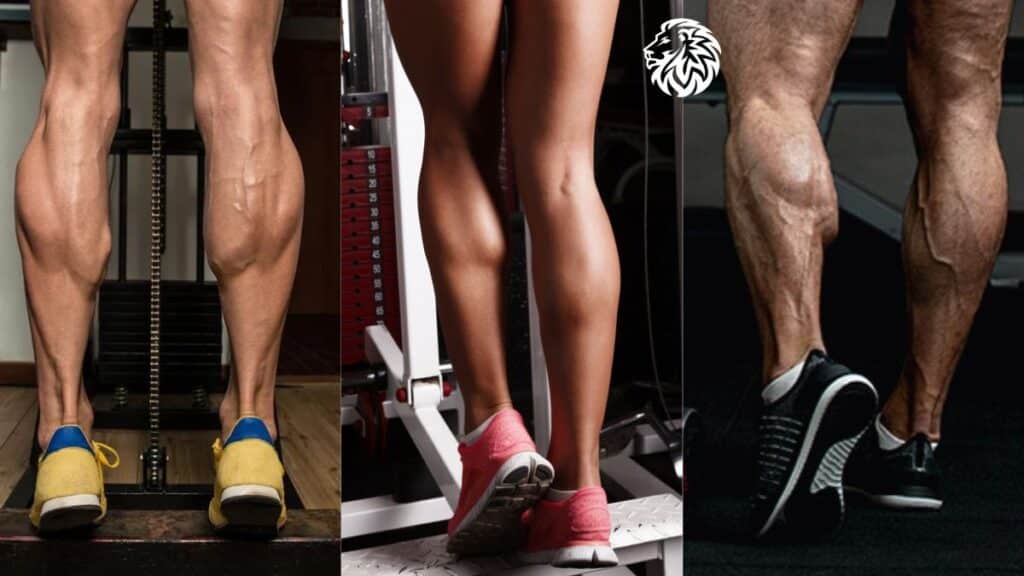
Effective calf training is not just about the exercises you do but also about how you do them. Avoiding common mistakes is crucial for progress and injury prevention. Here we discuss typical errors in calf training and provide tips to correct them.
- Common Calf Training Mistakes
- Neglecting Full Range of Motion: Many people fail to fully extend or flex the ankle during calf exercises, limiting muscle engagement and growth.
- Using Too Much Weight Too Soon: Overloading the muscles with excessive weight can lead to poor form and injury.
- Bouncing During Repetitions: Using momentum rather than muscle strength to perform movements reduces the effectiveness of the exercise and increases injury risk.
- Ignoring the Soleus Muscle: Focusing solely on the gastrocnemius and neglecting the soleus can lead to imbalanced development.
- Lack of Variety in Exercises: Repeating the same exercises without variation can lead to a plateau in muscle growth.
- Tips for Proper Form and Injury Prevention
- Maintain Full Range of Motion: Ensure you are fully lifting and lowering your heels in each repetition to engage the entire calf muscle.
- Gradual Increase in Weights: Start with a manageable weight and gradually increase as your strength improves. This helps in maintaining proper form.
- Controlled Movements: Avoid bouncing or using momentum. Focus on controlled, deliberate movements for maximal muscle engagement.
- Incorporate Exercises for the Soleus: Include seated calf raises or other exercises that specifically target the soleus muscle.
- Variety is Key: Regularly change your workout routine to include different calf exercises, rep ranges, and training techniques.
- Focus on Symmetry: Pay attention to both calves equally to prevent imbalances. Use single-leg exercises if necessary.
- Rest and Recovery: Allow adequate recovery time between workouts to prevent overuse injuries.
- Warm-Up Properly: Always start with a good warm-up to prepare the muscles and joints for the workout.
By being mindful of these common mistakes and adhering to the tips for proper form and injury prevention, you can enhance the effectiveness of your calf workouts, promote steady muscle growth, and reduce the risk of injuries.
Tracking Progress and Adjustments
Tracking progress is a critical component of any successful calf building program. It helps in maintaining motivation, assessing effectiveness, and making necessary adjustments for continued growth. Understanding when and how to modify your routine ensures you’re constantly challenging your muscles and avoiding plateaus.
- Importance of Tracking Workout Progress
- Measuring Improvement: Regularly tracking workouts allows you to see improvements in strength, endurance, and muscle size over time.
- Identifying Plateaus: Keeping a workout log helps in identifying plateaus – periods where no significant progress is seen.
- Motivation: Seeing tangible progress can be highly motivating and encourages adherence to the workout routine.
- When and How to Adjust the Workout Routine
- Assessing Progress: Every 4-6 weeks, assess your progress. Look for changes in strength, endurance, and muscle size.
- Increasing Intensity: If you’re not seeing progress, consider increasing the intensity of your workouts. This can be done by adding more weight, increasing reps, or incorporating advanced techniques like super sets or drop sets.
- Changing Exercises: To avoid adaptation, change your exercises every few months. This can involve different calf exercises or variations of the exercises you are already doing.
- Adjusting for Overtraining: If you experience signs of overtraining like prolonged soreness, fatigue, or decreased performance, it may be necessary to scale back and focus on recovery.
- Balancing Workout and Recovery: Ensure you have a good balance between workout intensity and adequate recovery. Overworking the muscles without sufficient recovery can lead to stagnation or injury.
- Seeking Feedback: Consider getting feedback from a fitness professional. They can provide insights on your form, routine, and ways to optimize your calf training.
Tracking progress and knowing when and how to adjust your routine are fundamental to continuous improvement. It ensures that your calf training remains effective, challenging, and aligned with your muscle-building goals.
Conclusion
In our journey to bulk up skinny calves, we’ve explored various facets of calf muscle development, from understanding the anatomy of these stubborn muscles to mastering exercises that target them effectively. We delved into the importance of nutrition and recovery, emphasizing that muscle growth extends beyond the gym. We highlighted the necessity of a proper warm-up and the implementation of advanced techniques to intensify workouts, all while underscoring the significance of tracking progress and making adjustments for continual improvement.
Key Points Recap:
- Calf Anatomy: The gastrocnemius and soleus muscles each require specific exercises for optimal development.
- Nutrition and Recovery: Essential for muscle repair and growth.
- Effective Exercises: Standing and seated calf raises, leg press calf raises, single-leg calf raises, and jump rope are crucial for building calf muscles.
- Advanced Techniques: Techniques like drop sets, super sets, and eccentric training can further enhance muscle growth.
- Tracking and Adjusting: Regular assessment and adjustment of your workout routine are key to continuous improvement.
Encouragement for Consistency and Patience: Building calf muscles, especially for those with naturally skinny legs, is a journey that requires patience, persistence, and dedication. Consistency in your workouts, coupled with a balanced diet and adequate rest, will lead to visible changes over time. Remember, muscle growth is a gradual process, and every small step counts.
Final Motivational Words: To all those striving to transform their skinny legs into strong, muscular calves: your goals are within reach. Embrace the challenge, celebrate your progress, and remain committed to your routine. Your perseverance will pay off, not just in enhanced muscle size but also in increased strength and confidence. Keep pushing forward, and let every rep move you closer to your desired physique. Your dedication and hard work will ultimately sculpt the strong, well-defined calves you aspire to achieve.
